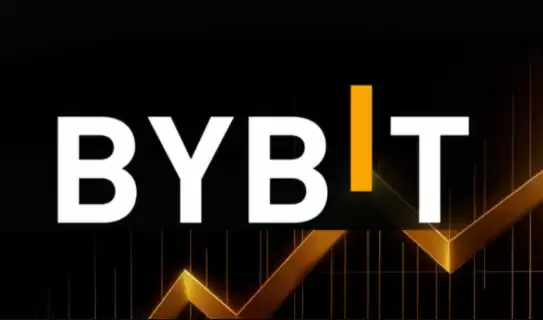-
 bitcoin
bitcoin $122090.672462 USD
1.59% -
 ethereum
ethereum $4493.758974 USD
0.56% -
 xrp
xrp $3.033145 USD
0.65% -
 tether
tether $1.000629 USD
0.00% -
 bnb
bnb $1169.854250 USD
7.07% -
 solana
solana $230.954786 USD
-0.19% -
 usd-coin
usd-coin $0.999785 USD
0.00% -
 dogecoin
dogecoin $0.256108 USD
-1.12% -
 tron
tron $0.342333 USD
-0.12% -
 cardano
cardano $0.859632 USD
-0.10% -
 hyperliquid
hyperliquid $48.932146 USD
-2.25% -
 chainlink
chainlink $22.345466 USD
-1.29% -
 ethena-usde
ethena-usde $1.000217 USD
-0.03% -
 avalanche
avalanche $31.203456 USD
1.93% -
 sui
sui $3.579145 USD
1.05%
Bybit contract skills
Mastering contract trading skills on Bybit empowers traders with the tools and knowledge necessary to navigate the complexities of cryptocurrency markets, unlocking opportunities for both novice and seasoned traders alike.
Nov 07, 2024 at 11:22 pm

Bybit Contract Skills: A Comprehensive Guide
In the ever-evolving realm of blockchain technology, Bybit has emerged as a leading cryptocurrency exchange, renowned for its robust contract trading platform. For both novice and seasoned traders alike, mastering contract skills on Bybit is essential to unlocking the full potential of this versatile trading platform. This comprehensive guide will delve into the intricacies of Bybit contract trading, empowering traders with the knowledge and skills necessary to navigate the complexities of this dynamic market.
Understanding Bybit Contract Trading
- Introduction to Contract Trading: Bybit contract trading involves speculating on the future price of cryptocurrencies without actually owning the underlying asset. Traders enter into agreements known as contracts, which obligate them to buy or sell a specific cryptocurrency at a predetermined price on a future date.
- Types of Contracts: Bybit offers two types of contracts: inverse perpetual contracts and USDT perpetual contracts. Inverse perpetual contracts are denominated in Bitcoin (BTC) or Ethereum (ETH), while USDT perpetual contracts are denominated in Tether (USDT). Perpetual contracts have no fixed expiration date, allowing traders to hold positions indefinitely.
- Leverage and Margin: Bybit provides traders with access to leverage, which enables them to trade with a higher capital amount than their initial investment. However, leverage also magnifies potential profits and losses, requiring prudent risk management. Traders must maintain sufficient margin to cover potential adverse price movements.
Mastering Bybit Contract Trading
- Essential Order Types: Bybit offers a range of order types, catering to different trading strategies. Limit orders allow traders to specify the desired execution price, while market orders execute immediately at the prevailing market price. Stop-limit orders and stop-market orders combine limit orders and market orders, providing flexibility and control.
- Effective Risk Management: Risk management is paramount in contract trading. Bybit offers several tools and features to help traders mitigate risks, including stop-loss orders, take-profit orders, and trailing stop-loss orders. These tools enable traders to define predefined exit points based on predetermined price levels.
- Technical Analysis and Charting: Technical analysis involves studying historical price data to identify patterns and trends. Bybit provides comprehensive charting tools, including candlestick charts, indicators, and technical analysis tools, empowering traders with insights into market movements.
- Social Trading and Copy Trading: Bybit offers social trading and copy trading features, which allow traders to follow and replicate the trades of experienced and successful traders. This feature provides a valuable learning opportunity for novice traders and can assist in strategy development.
Advanced Contract Trading Techniques
- Basis Trading: Basis trading involves trading the difference between the spot price of a cryptocurrency and its futures price. Traders can capitalize on price inefficiencies and capture profits by simultaneously buying the spot asset and selling the corresponding futures contract or vice versa.
- Cross Currency Arbitrage: Cross-currency arbitrage involves exploiting price discrepancies in different cryptocurrencies. Traders buy a cryptocurrency in one market and simultaneously sell it in another market where the price is higher, capturing the price difference.
- Scalping and High-Frequency Trading: Scalping involves making multiple trades within a short timeframe to profit from small price movements. High-frequency trading (HFT) uses sophisticated software and algorithms to execute a large volume of trades in a short period. Both techniques require a deep understanding of market dynamics and advanced trading skills.
Conclusion
Mastering contract skills on Bybit unlocks a world of opportunities for traders of all levels. By understanding the fundamentals of contract trading, employing effective risk management strategies, and leveraging advanced techniques, traders can navigate the complexities of cryptocurrency markets and maximize their trading potential.
While continuous education, practice, and discipline are essential, this comprehensive guide provides a solid foundation for success in the dynamic and rewarding realm of Bybit contract trading.
Disclaimer:info@kdj.com
The information provided is not trading advice. kdj.com does not assume any responsibility for any investments made based on the information provided in this article. Cryptocurrencies are highly volatile and it is highly recommended that you invest with caution after thorough research!
If you believe that the content used on this website infringes your copyright, please contact us immediately (info@kdj.com) and we will delete it promptly.
- BlockDAG, DOGE, HYPE Sponsorship: Crypto Trends Shaping 2025
- 2025-10-01 00:25:13
- Deutsche Börse and Circle: A StableCoin Adoption Powerhouse in Europe
- 2025-10-01 00:25:13
- BlockDAG's Presale Buzz: Is It the Crypto to Watch in October 2025?
- 2025-10-01 00:30:13
- Bitcoin, Crypto, and IQ: When Genius Meets Digital Gold?
- 2025-10-01 00:30:13
- Stablecoins, American Innovation, and Wallet Tokens: The Next Frontier
- 2025-10-01 00:35:12
- NBU, Coins, and Crypto in Ukraine: A New Yorker's Take
- 2025-10-01 00:45:14
Related knowledge

Practical parameter settings for a Bitcoin multi-timeframe moving average system
Sep 18,2025 at 10:54pm
Optimizing Timeframe Combinations for Bitcoin Trading1. Selecting appropriate timeframes is crucial when building a multi-timeframe moving average sys...

How can I filter out false breakouts in Dogecoin high-frequency trading?
Sep 22,2025 at 01:00am
Understanding False Breakouts in Dogecoin Trading1. A false breakout occurs when Dogecoin's price appears to move beyond a defined support or resistan...

Techniques for identifying tops and bottoms in the Bitcoin on-chain NVT model
Sep 20,2025 at 07:54pm
Understanding the NVT Model in Bitcoin Analysis1. The Network Value to Transactions (NVT) ratio is often described as the 'P/E ratio' of the cryptocur...

What does the surge in open interest in Bitcoincoin futures mean?
Sep 20,2025 at 11:18pm
Understanding the Surge in Dogecoin Futures Open Interest1. A surge in open interest within Dogecoin futures indicates a growing number of active cont...

How can I use the Ethereum USDT premium to gauge market sentiment?
Sep 18,2025 at 11:55pm
Understanding the Ethereum USDT Premium1. The Ethereum USDT premium refers to the price difference between USDT (Tether) traded on Ethereum-based plat...

What should I do if Ethereum staking yields decline?
Sep 20,2025 at 06:18am
Understanding the Causes Behind Declining Ethereum Staking Yields1. The Ethereum network transitioned to a proof-of-stake consensus mechanism with the...

Practical parameter settings for a Bitcoin multi-timeframe moving average system
Sep 18,2025 at 10:54pm
Optimizing Timeframe Combinations for Bitcoin Trading1. Selecting appropriate timeframes is crucial when building a multi-timeframe moving average sys...

How can I filter out false breakouts in Dogecoin high-frequency trading?
Sep 22,2025 at 01:00am
Understanding False Breakouts in Dogecoin Trading1. A false breakout occurs when Dogecoin's price appears to move beyond a defined support or resistan...

Techniques for identifying tops and bottoms in the Bitcoin on-chain NVT model
Sep 20,2025 at 07:54pm
Understanding the NVT Model in Bitcoin Analysis1. The Network Value to Transactions (NVT) ratio is often described as the 'P/E ratio' of the cryptocur...

What does the surge in open interest in Bitcoincoin futures mean?
Sep 20,2025 at 11:18pm
Understanding the Surge in Dogecoin Futures Open Interest1. A surge in open interest within Dogecoin futures indicates a growing number of active cont...

How can I use the Ethereum USDT premium to gauge market sentiment?
Sep 18,2025 at 11:55pm
Understanding the Ethereum USDT Premium1. The Ethereum USDT premium refers to the price difference between USDT (Tether) traded on Ethereum-based plat...

What should I do if Ethereum staking yields decline?
Sep 20,2025 at 06:18am
Understanding the Causes Behind Declining Ethereum Staking Yields1. The Ethereum network transitioned to a proof-of-stake consensus mechanism with the...
See all articles










































































